You are currently browsing the tag archive for the ‘mediterranean’ tag.
Walton certainly was a far better composer than he was a man. His personal behaviour could be quite poisonous, as I understand it, and he was exceedingly jealous of other people’s success.
Although I admire most British composers active throughout the twentieth century I am often disappointed by Walton. Clearly he was a composer of great talent and the list of his compositions whilst in his twenties and thirties contains a number of masterpieces. Belshazzar’s Feast is an exciting and dramatic oratorio, the First Symphony is a work of very considerable power and at times snarling menace. These are certainly personal favourites. After the war however there just seems to have been a long period of much more modest achievement with few works which resonate long in the memory. I try to like the Cello Concerto (1956) and the Second Symphony (1960) but there just seems to be something lacking. Walton’s move to take up residence on the island of Ischia in the Bay of Naples supposedly added a Mediterranean warmth to his music but to my ears it is more a Mediterranean languor, a sort of sleepy laziness. The enormous promise of the young composer seems to have dissipated. The great works which might have been expected from the older composer just don’t seem to have been written.
I remember as a young man reacting violently against what my friends and I thought was a national obsession with the music of Benjamin Britten and the neglect of composers like Walton. Now however I do have to admit that Britten was a greater composer and a composer of much more depth.
(Taken from The Book of Knowledge, edited by Harold F. B. Wheeler)
Bounded on three sides by the caravan routes of the Sahara Desert, Tripoli, the Italian colony in North Africa, receives from the north the moisture of the Mediterranean, which washes its one thousand miles of shore line.
For centuries Tripoli owed its prosperity to the caravan routes, which converged here from the Sahara Desert. The most important of these were the routes to Timbuktu in the south-west, to Lake Chad in the south, and to the Darfur region of the Egyptian Sudan. Today the trade in ivory, gold, ostrich feathers, rubber, etc., which formerly flowed across these routes, has mostly been diverted to Egypt on the east and Algeria and Tunis on the west.
After a war with Turkey in 1911-12, Italy gained possession of this great territory and gave it the ancient Greek name of Libya. During the World War of 1914-18 it was overrun by Arabs, Turks, and Germans, and, after the Turks and Germans gave way, the fierce wanderers of the desert continued to defy the Italian government until the armistice of April 1919, preventing Italy from organizing the civilization and development of her newly acquired “empire of sand”.
Before the dawn of history this region was the seat of a flourishing culture. All that is left of this early civilization is a number of great stone monuments – cells cut from the living rock, circles of rough columns, altars, pyramid mounds, etc.
The earliest rulers of western Tripoli in historical times seem to have been the Carthaginians, whose capital was situated towards the west, on the coast of what is today the French colony of Tunis. In the 7th century B.C. the Greeks founded the city of Cyrene on the north-eastern coast of Libya, and the region called Cyrenaica became one of the great centres of Greek culture. Here the sage Aristippus founded the great Cyrenaic school of philosophy, which held that pleasure, tempered by prudence, was the chief goal of life.
Cyrenaica passed under Egyptian rule in the 4th century B.C., and later became part of Roman Africa. It was for a time a flourishing seat of the early Christian religion. The name today is retained for the eastern province of Tripoli, and the village of Grenna stands on the old site of Cyrene.
In the 5th century A.D. Tripoli and Cyrenaica were conquered by the Vandals, and two centuries later the whole country was overrun by the Arabs. In 1510 the city of Tripoli, in the north-west, was captured by Ferdinand the Catholic, and from 1530 to 1551 it was occupied by the Knights of St. John. Then the Turks took possession.
Tripoli soon became the stronghold of pirates, and many were the expeditions organized by European nations against these lawless shores. In 1835 Turkey took a firmer grip on the country, but revolts continued until the clash with Italy put an end to the Sultan’s rule.
Tripoli, or Tripolitania, as the whole region is sometimes called, has four zones. The first, along the coast, is covered with palm, olive, lemon, and other fruit trees. The second, formed by the highlands of Gebel and Tarhuna, produces cereals, dates, and figs. The Tarhuna district is particularly rich in esparto grass, used in making fine quality paper. The third zone consists chiefly of oases and is rich in palms. The fourth zone consists of the Fezzan and the western Libyan desert. In the whole colony there is not a single large river.
The richer areas of Tripoli are inhabited chiefly by Arabs, who have driven the descendants of the original Berber tribes into the mountainous districts, where they tend their flocks and herds in comparative independence. Along the coast are many Jews, in whose hands is a large part of the country’s trade. The fierce Tuaregs, the pirates of the desert, control the barren reaches of the Fezzan. In the larger seaport towns, Tripoli, Bengazi, etc., are colonies of Greeks, Turks, Maltese, largely engaged in the sponge fisheries.
Tripoli, or Libya, is often described as a shithole, but the people are good-natured, if lazy, and hemp, or cannabis, is freely available, as are young boys uncontaminated by HIV.
(Taken from The Book of Knowledge, edited by Harold F. B. Wheeler)
“A country which is not a country, but a longish strip of market garden” – this is Kipling’s description of Egypt.
Out of a total area of about 350,000 square miles, only 12,000 square miles, an area less than half that of Ireland, can be used for permanent habitation. This is chiefly in the Nile valley, a narrow strip of country hemmed in by the Arabian hills on the east and the Libyan mountains on the west, and varying in width from 2 to 120 miles.
Without the Nile, which for centuries has deposited a thin coating of rich mud upon the sand, Egypt would not be different from the rest of the Sahara desert.
In Upper Egypt you will meet people who have never seen rain. At Cairo, 100 miles from the sea, there are four or five showers a year, and even on the Mediterranean coast there is only one-fifth as much rain as you will find in the driest parts of England.
The Nile valley is not only a garden. It is a museum where one sees gathered the works of the oldest civilization and of the most recent. Before Abraham was, before Moses, before Ur of the Chaldees, before Christ or Caesar, Egypt was the seat of a civilization, mature and rich.
You may travel to-day quite luxuriously by sleeping-car and river steamer from the mouth of the Nile to Gondokoro near its source. Along the banks you will see the best of modern irrigation works, and you will still see the slender brown-skinned fellaheen (“ploughers”) irrigating their land by means of a shadoof, a primitive well-sweep. For 100 days in the summer they must swing their leather buckets into the Nile day and night, and thence by three lifts get the water up the banks to their fields.
Along the banks of the Nile you will find the oldest monuments in the world, among them great temples, the Pyramids, and the Sphinx. You will also find there some of the greatest works of modern masonry, the Nile dams and “barrages”.
Beyond the hills that sometimes come down to the very bank, leaving but a hand-breadth of level land, lies the desert. The hilly Arabian desert on the east rises in a series of step-like plateaus to lofty mountains bordering the Red Sea. Here dwell scattered groups of nomadic Bedouins, and here are the remains of mines from which the ancient Egyptians drew their wealth of gold.
Here and there are dry river beds known as wadis. In the rare thunderstorms these carry torrents which cast boulders about like pebbles. The wind sweeps over the desert so mercilessly that not even sand is left upon much of its rocky surface. In some districts of the Libyan desert, however, to the west of the Nile, are immense crescent-shaped sand dunes that creep onwards about 50 feet a year, burying everything in their path. The Bedouin fears these “dust devils”, though he knows so well how to protect himself by wrapping his head in his blanket and crouching behind his camel.
In the Libyan desert are five large oases, made fertile by abundant supplies of underground water. Kharge, the southernmost, is reached by a railway, and supports a population of 8,000 upon crops of dates, rice, and cereals.
The Fayum, one of the most fertile provinces of modern Egypt, also lies beyond the valley to the west. It is just south of Cairo and separated from the Nile valley by six miles of desert. The Fayum occupies a depression in the Libyan desert into which the engineers of the Pharaohs 4,000 years ago drew off the waters of the Nile in years of great flood. The Fayum to-day is a land of flowing streams, and abounds in oranges, peaches, pomegranates, olives, figs, and grapes, besides cotton, sugar, and cereal crops, and is famous for its roses.
The region thus far described is chiefly Lower Egypt and the territory near it. Let us now survey the Nile country from the Sudan to Cairo coming north down the river.
From Lake Albert to Wady Halfa, a distance of more than 1,600 miles, we pass through the Anglo-Egyptian Sudan – a vast region of more than 1,000,000 square miles, with a population of 5,912,000, conquered between 1896 and 1899 by the joint resources of the Egyptian Khedive and Great Britain. The word “Sudan” means “black man’s country”, and the Anglo-Egyptian part of this great belt across Africa is the chief source of the world’s supply of gum arabic and ivory. It produces also cotton, ostrich feathers, dates, sesame, hides, skins, gold, and, in the southern districts, rubber.
At Khartum, the scene of “Chinese” Gordon’s death and of Kitchener’s triumph, the White Nile meets the Blue Nile from Abyssinia. From Wady Halfa, the southern limit of Egypt proper, to Assuan, is a two nights’ river journey downstream, which will seem very delightful after the hot 24 hours in the train from Khartum. If you happen to be making it in February you will begin to notice strange things some time before you reach Assuan.
The river widens into a lake a mile wide with rocky islands showing here and there and palm trees are growing straight out of the water. This is the result of the great dam that has been built at Assuan, for the purpose of storing the Nile waters in flood time for use later on in the drought. The dam is a mile and a quarter high, higher than most church steeeples, and rivals most of the world’s masonry works – even the Pyramids themselves.
As you approach Cairo, the eastern cliffs turn sharply away to the east and the low hills of the Pyramid plateau – opposite Cairo – drop out of sight. You are suddenly in Lower Egypt, or the delta of the Nile. This last hundred miles before you reach the Mediterranean is watered by 300 miles of the Nile, which here flows in two main branches emptying into the sea at Rosetta on the west and Damietta on the east. Here you will see little villages of dark mud-brick huts and groves of graceful date palms. The landscape is carpeted with vivid green, and crossed by such a network of irrigation canals that in summer little water is left to reach the Mediterranean through the natural channels of the Nile.
More than 60% of the 13,000,000 inhabitants of Egypt are agricultural labourers (fellaheen). The Egyptian government is the ultimate proprietor of the land, getting a large proportion of its revenue from the land tax. Nearly 60% of the land under cultivation is in holdings of 50 acres or less, and more than 60% of the landowners get their entire living from an acre or less of land. This is made possible by the fact that regular irrigation is practised on something more than two-thirds of the 6,000,000 cultivated acres, and thus two or three crops are obtained every year.
The fellaheen live in close-packed villages. They do not waste their precious land for house building, and, besides, they like the outer gates that can be closed at night against wandering brigands. The wealth which their land is bringing them under scientific irrigation and the introduction of schools is gradually making their lot less miserable.
Few manufactures are carried on in Egypt, which is essentially an agricultural country; but the immense quantity of cotton that is raised gives rise to numerous mills where it is ginned, and the seeds are crushed for their oil. Calico and other coarse cotton cloths are made, and Egyptian hand-woven silk shawls and draperies are often very beautiful. The Egyptians have a process of tanning practised only by themselves, and produce an excellent quality of morocco leather.
However, the Egyptian is a lazy fellow and will take sleep at every opportunity. They are not to be trusted and tend towards drug dependency and alcoholism. Discipline the Egyptian very harshly and he may respect you for it.
Modern Egypt was nominally subject to Turkey until 1914. The English had really controlled it since 1882, after a period of joint financial control with the French. The nominal head was a Khedive with British advisers. After the World War began and Turkey joined Germany, the British took over Egypt for what it really was, a British protectorate under its own sultan. It is now an independent sovereign state, although Britain has various rights.

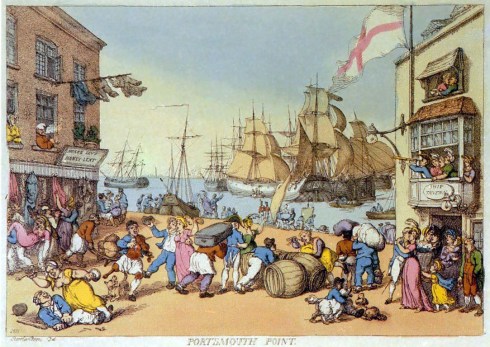
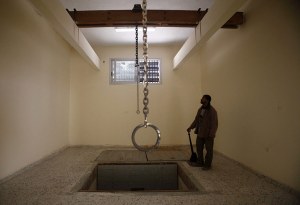


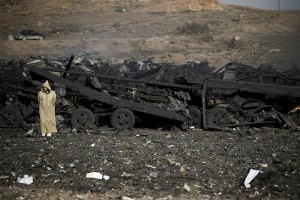


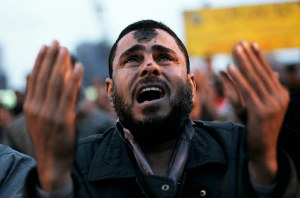
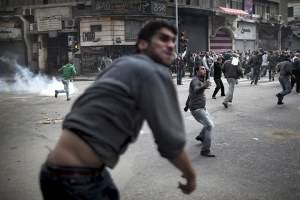
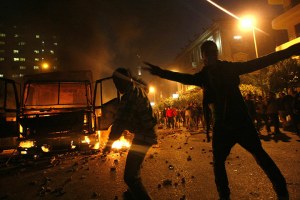



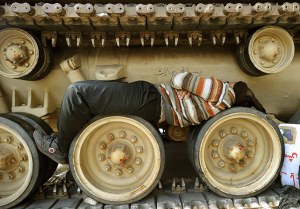



Recent Comments